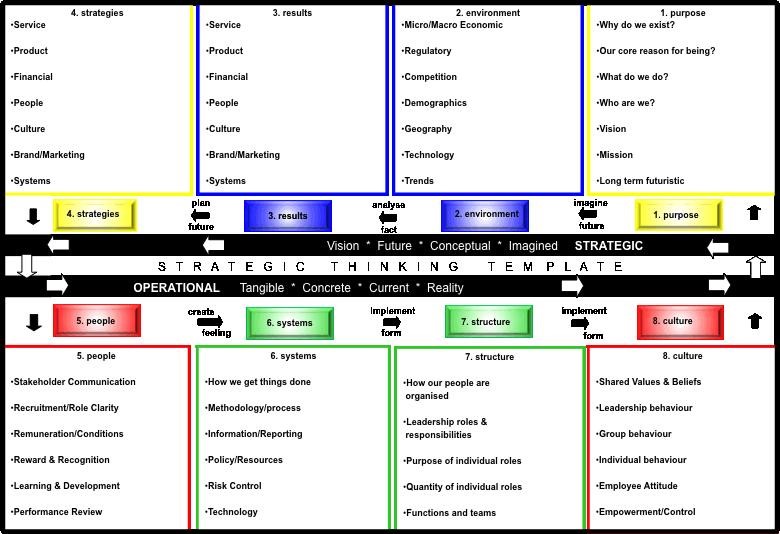
STRATEGY it’s a must not a should
Should is a road to a place called nowhere. Success is a place found on a road called must. Especially in such volatile, uncertain, complex and ambiguous times. When caught in the cut and thrust of operations its critical to have a strategy in place that provides a beacon reminder of the end in mind. A collective understanding from which anyone in the organisation can take a bearing.
A common problem with strategy is not the plan itself but a lack of organisational capability to execute. This is often a function of how strategy has been set, who has been involved, and how the organisation is continually engaged.
The strategic planning process addresses four key pillars of work. Firstly a review and resetting of organisational purpose. The organisations fundamental purpose for being, why at its core does it exist. The vision and mission for the organisation. With this clearly stated and understood the planning work then moves to assess and evaluate the environmental forces affecting the organisation. Markets, competition, economy, technology and the regulatory issues that are and will impact as the organisation moves forward. ‘Sometimes organisations take a narrow view of competition and yet a successful strategy almost always needs to beat the competition. Harshita Oruganti
Next in the process is a thorough review of results across a balanced scorecard of metrics. Based on the purpose of the organisation and a thorough review and evaluation of environmental issues, a view can be formed about what results should be possible, expected and desired. The strategic stewards of the organisation are now in a position to identify the sort of strategies that need to be put into place, and according to which priorities. Results and their corresponding strategies will be balanced if they are considered and prioritised across eight areas; service, products, financial, people, culture, brand, marketing and systems.

With this strategic framework in place the organisation is now positioned to put operational plans in place for each of the next successive one, two and three year milestones. Operational plans describe the specific measurable outcomes and tactics that will be actioned in a defined timeframe across the organisations structure, systems, people and culture. These are the specific actions that together will execute the imagined strategy into a reality.
Strategy can often suffer at the hands of a lack of imagination or willingness to imagine. Future states for both the organisation and environment don’t exist, they must be imagined. Too many organisations and senior executives value current reality over imagined future. Perhaps this was not so much of a problem in the past. However, futures are now just a stones throw away and often render mile stones as redundant or markers in need of replacement on the road to success. And yet we are often surrounded by overwhelming evidence of what future states will look like. Flexibility and adaptability are first preceded in the mind.
Execution becomes flawed when it is not well understood by its key stakeholders and when stakeholders fail to understand their role in delivering the strategy. For this reason care needs to be taken with regards to who is involved in the process of formulating strategy, how they are involved and how and when the rest of the organisation will be communicated with and engaged.
Imagination, emotional intelligence and teamwork are critical competancies for the LEADER manager.
Paul Berry

